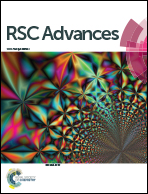Simultaneous removal of organic matter and nitrate from bio-treated leachate via iron–carbon internal micro-electrolysis
Abstract
The removal of nitrate and organic matter from landfill leachate has been an arduously difficult challenge in recent years. Iron–carbon internal micro-electrolysis combined with ammonia stripping has been employed for the simultaneous removal of nitrate and organic matter from the biochemically treated landfill leachate. Compared with synthetic wastewater, nitrate removal from practical leachate is much more difficult, with a good removal efficiency only at low pH value. The removal efficiency of organic matter would quickly reach the maximum in 20 minutes, but in 100 minutes for that of nitrate. The higher the initial pH was, the more ammonia could be removed. pH = 11 is a reasonable choice based on total cost and nitrate removal efficiency. The mechanisms of nitrate and organic matter removal by iron–carbon internal micro-electrolysis were investigated. Nitrate reduction to ammonia was the main way for nitrate removal, while adsorption by activated carbon and coagulation by iron ions were the two main ways for organic matter removal (with contribution of about 70% of the total COD removal). These results proved that iron–carbon internal micro-electrolysis followed with ammonia stripping could be a promising option for further nitrate and organic matter removal from biochemically treated leachate.


 Please wait while we load your content...
Please wait while we load your content...